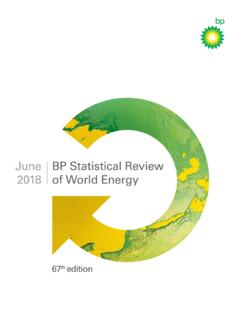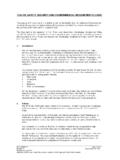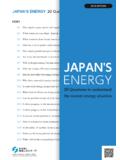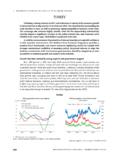Transcription of BP Statistical Review of World Energy 2016
1 Introduction1 Group chief executive s introduction2 2015 in Review Oil6 Reserves8 Production and consumption14 Prices16 Refining18 Trade movements Natural gas20 Reserves22 Production and consumption27 Prices28 Trade movements Coal30 Reserves and prices32 Production and consumption Nuclear energy35 Consumption Hydroelectricity36 Consumption Renewable energy38 Other renewables consumption39 Biofuels production Primary energy40 Consumption41 Consumption by fuel Appendices44 Approximate conversion factors44 Definitions45 More informationBP Statistical Review of World Energy June #BPstats65th editionDisclaimerThe data series for proved oil and gas reserves in BP Statistical Review of World Energy June 2016 does not necessarily meet the definitions, guidelines and practices used for determining proved reserves at company level, for instance, as published by the US Securities and Exchange Commission, nor does it necessarily represent BP s view of proved reserves by country. Rather, the data series has been compiled using a combination of primary official sources and third-party tools and resourcesFor 65 years, the BP Statistical Review of World Energy has provided high-quality objective and globally consistent data on World Energy markets.
2 The Review is one of the most widely respected and authoritative publications in the field of Energy economics, used for reference by the media, academia, World governments and Energy companies. A new edition is published every out more: Charting toolYou can view predetermined reports or chart specific data according to Energy type, region, country and year. Energy OutlookWatch the BP Energy Outlook 2016 video, containing our projections of long-term Energy trends to 2035. Download the booklet and presentation materials. Join the conversation#BPstatsDownload the BP World Energy appExplore the World of Energy from your tablet or smartphone. Customize charts and perform the calculations. Review the data online and offline. Download the app for free from the Apple App Store and Google play informationAll the tables and charts found in the latest printed edition are available at plus a number of extras, including: Historical data from 1965 for many sections.
3 Additional data for refined oil production demand, natural gas, coal, hydroelectricity, nuclear Energy , electricity, renewables and CO2 emissions. PDF versions and PowerPoint slide packs of the charts, maps and graphs, plus an Excel workbook of the data. Regional and country factsheets. Videos and this review1 Welcome to the BP Statistical Review of World Energy . This is the 65th edition of the Statistical Review , an important milestone for a publication that has traced developments in global Energy markets since 1951, a year when coal provided more than half of the World s Energy and the price of oil was around $16 (in today s money). Remarkably, the share of oil in global Energy then was almost identical to its share today, at a little over 30%.We believe the BP Statistical Review contributes to the World s understanding of Energy markets by providing timely and objective data to help inform discussions, debates and decision-making. Its annual data helps us better interpret the swings and fluctuations that we are living through, and the historical data provide an important context for gauging where we may be heading next.
4 This year s edition records the data for 2015, a year in which significant long-term trends in both the global demand and supply of Energy came to the the demand side, we are seeing a gradual deceleration in global Energy consumption as the huge boost from globalization and Chinese industrialization slowly subsides. That slowing was compounded last year by continuing weakness in the global economy. As a result, global primary Energy consumption grew by just in 2015, similar to the rate of growth seen in 2014, but much slower than the average seen over the past decade. Much of this weakness was driven by China, where Energy consumption grew at its slowest rate in almost 20 years. Even so, China remained the World s largest growth market for Energy for a fifteenth consecutive year. The supply of Energy in recent years has been driven by different factors, notably technological advances that have increased the range and availability of different fuels. The US shale revolution has unlocked huge swathes of oil and gas resources.
5 And rapid technological gains have supported strong growth in renewable Energy , led by wind and solar power. These advances meant that, despite the weakness of Energy demand, oil, natural gas and renewable Energy all recorded solid growth in 2015. Their gain was at the expense of coal, which saw its largest fall on record, taking its share within primary Energy to its lowest level since 2005. As we know, the contrasting trends in the demand and supply of Energy had major effects on Energy prices, with oil, gas and coal prices all falling sharply last year. These price declines played a key role in prompting adjustments in Energy markets: boosting demand in some markets, most notably oil; curtailing supply and shifting the fuel mix in others. The extent of this adjustment bodes well for the future stability of our industry. The combination of slow demand growth and a shift in the fuel mix away from coal towards natural gas and renewable Energy had important implications for carbon emissions.
6 In particular, carbon emissions from Energy consumption are estimated to have been essentially flat in 2015, the lowest growth in emissions in nearly a quarter of a century, other than in the immediate aftermath of the financial crisis. Last year was of course significant for the UN-led COP21 meetings in Paris and the historic agreement to tackle climate change. BP supports those aims and is committed to playing its part in helping to achieve them. The stalling in the growth of carbon emissions in 2015 is a step in the right direction. But it is only a small step: the scale of the challenge remains substantial, requiring major shifts in both Energy efficiency and the fuel industry is living through a period of profound change. But that is nothing new: the past 65 years have seen huge changes to the global Energy landscape. Our task as an industry is to take the steps necessary to provide the Energy to meet the World s growing demand and ensure our sector remains resilient to the many factors that may buffet us in the near term.
7 We must continue to invest in Energy , in all its forms, to meet future needs. That is no easy task and requires fine judgements judgements that can be more confidently made when based on the kind of solid data and analysis provided by the Statistical Review . The need for BP s Statistical Review over the next 65 years is likely to be just as great as in the me conclude by thanking BP s economics team and all those who helped us prepare this Review in particular those in the governments of many countries around the World who have contributed their official data again this year. Thank you for your continuing cooperation and DudleyGroup chief executiveJune 2016 Group chief executive s introductionEnergy in 2015 slow demand growth amid plentiful in reviewGlobal primary Energy consumption increased by just in 2015, similar to the below-average growth recorded in 2014 (+ ) and well below its 10-year average of Other than the recession of 2009, this represented the lowest global growth since 1998.
8 Consumption growth was below the 10-year average for all regions except Europe emerging economies accounted for 97% of the increase in global consumption. OECD consumption experienced a small increase, with growth in Europe offsetting declines in the US and Japan. Chinese consumption slowed further, but still recorded the World s largest increment in primary Energy consumption for the fifteenth consecutive year. Russia recorded the largest volumetric decline in primary Energy consumption. By fuel, only oil and nuclear power grew at above-average rates, with oil gaining global market share for the first time since 1999. Renewables in power generation continued to grow robustly, to nearly 3% of global primary Energy consumption, while coal consumption recorded the largest percentage decline on record. Global CO2 emissions from Energy are estimated to have been essentially for all fossil fuels fell in 2015 for all regions. Crude oil prices recorded the largest decline on record in dollar terms, and the largest percentage decline since 1986.
9 The annual average price for Brent, the international crude oil benchmark, declined by 47%, reflecting a growing imbalance between global production and consumption. The differential between Brent and the US benchmark West Texas Intermediate (WTI) narrowed to its smallest level since 2010. Natural gas prices fell in all regions, with the largest percentage declines in North America; the US benchmark Henry Hub fell to its lowest level since 1999. Coal prices around the World fell for the fourth consecutive developmentsOil remained the World s leading fuel, accounting for of global Energy consumption. Although emerging economies continued to dominate the growth in global Energy consumption, growth in these countries (+ ) was well below its 10-year average of economies now account for of global Energy consumption. Chinese consumption growth slowed to just , while India (+ ) recorded another robust increase in consumption. OECD consumption increased slightly (+ ), compared with an average annual decline of over the past decade.
10 A rare increase in EU consumption (+ ) more than offset declines in the US ( ) and Japan ( ), where consumption fell to the lowest level since in global primary Energy consumption remained low in 2015; and the fuel mix shifted away from coal towards lower-carbon six-level Puxi Viaduct in Shanghai is one of city s busiest interchanges and is used by thousands of vehicles every hour. In the UK the National Grid supplies electricity using about 7,200km of power cable line and 690km of underground cable. Growth of global primary Energy consumption, well below the 10-year average of + of Chinese primary Energy consumption, the World s largest increment.+ storage tanks, pipes and towers at BP s Rotterdam refinery. The Valhall platform complex in the Norwegian North Sea, Norway. OilPricesDated Brent averaged $ per barrel in 2015, a decline of $ per barrel from the 2014 level and the lowest annual average since 2004. Crude oil prices rose in early 2015 as global consumption rebounded and US production began to register month-on-month declines.














